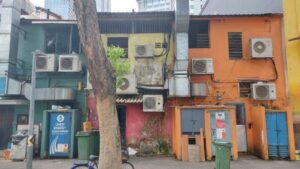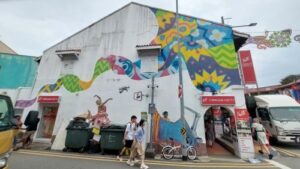
Little India straddles Serangoon Road in the Rochor area of central Singapore. According to Google Maps, the neighbourhood begins at Bukit Timah Road to the south and extends west to Racecourse Road and east to Jalan Besar. Northwards, it ends at Kinta Road west of Serangoon Road and at Hindoo Road east of it, though I’d say the South Asian vibe extends a fair bit above Hindoo Road – as far as Syed Alwi Road, after which the concrete malls, hotels and multistorey carparks take over. In fact, the decorations currently hanging above Serangoon Road for 2025’s Deepavali – the Hindu festival of lights – extend north for many more blocks.
Back in colonial times, what is now Little India was once a district used by European cattle farmers and traders. The presence of cattle created a demand for cattle-workers, and many of these workers came from India. When the economic environment changed and the Europeans took their cattle elsewhere, the Indians remained and turned their hands to other trades. Singapore recognized the district as a conservation area in 1989.
It’s a magnet for both tourists and shoppers. The little shophouses lining Serangoon Road and its side-streets do a busy trade in souvenirs, jewelry, clothes, textiles, perfumes, phones, electrical appliances, homeware and kitchenware. Lovers of tradition will appreciate the stalls where hands can be decorated with intricate henna art and the flower-shops festooned with flower-garlands for religious and other occasions. And foodies will enjoy Little India’s many eateries – dishes and foodstuffs I’ve heard are particularly good there include biryani, chapati, chaat and fish-head curry. Meanwhile, I was delighted to find down one side-street an establishment selling Indian beer for five dollars a pint, which, local beer-drinkers will tell you, is quite the bargain in Singapore.
But the thing I like best about Little India is how, where there’s an expanse of wall looking onto a street, an artist has frequently used it as a canvas and painted something. These pieces of street-art might be big, bold murals covering the entire side of a building or something on a smaller, more intimate scale.
Often, the subjects of the art are the businesses that operate, or used to operate, in Little India. These include merchants, tailors and the tiffin men who traditionally used their carts, loaded with metal containers, to deliver meals to and snacks to workers in the middle of shifts – they were the food-delivery folk of their day.
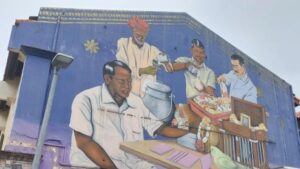
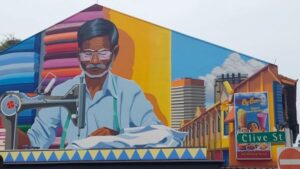
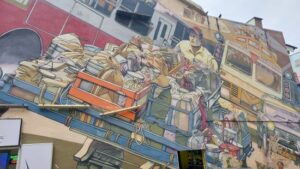
Meanwhile, Lembu Square has artwork depicting a whole street-front of facades, including a school, some of its pupils and one staff-member. For a moment, I thought the bicycles were part of the picture – then I realised they’d just been propped there.
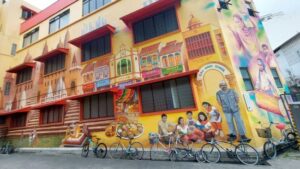
Other works lean away from the everyday world of work and commerce and instead celebrate nature or traditional Indian culture.
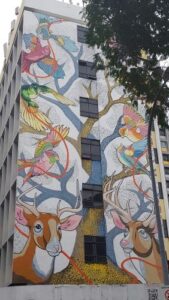
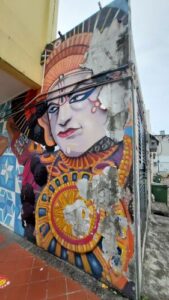
Finally, this building-side in Lembu Square doesn’t contain any artwork. However, with its haphazard patchwork of colours, and its configurations of bins, doors, grills and aircon condenser units, it looked artistic to me.
